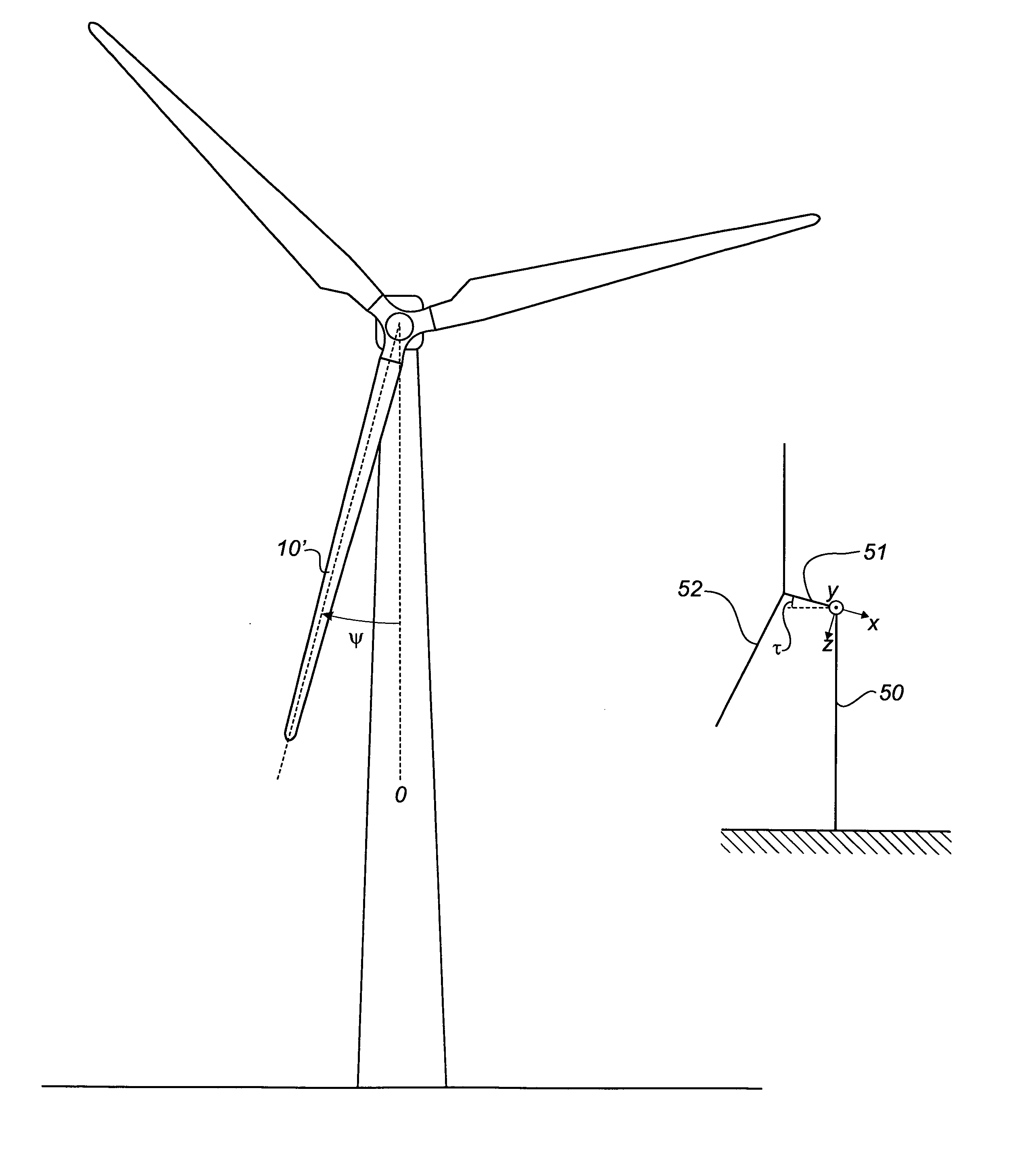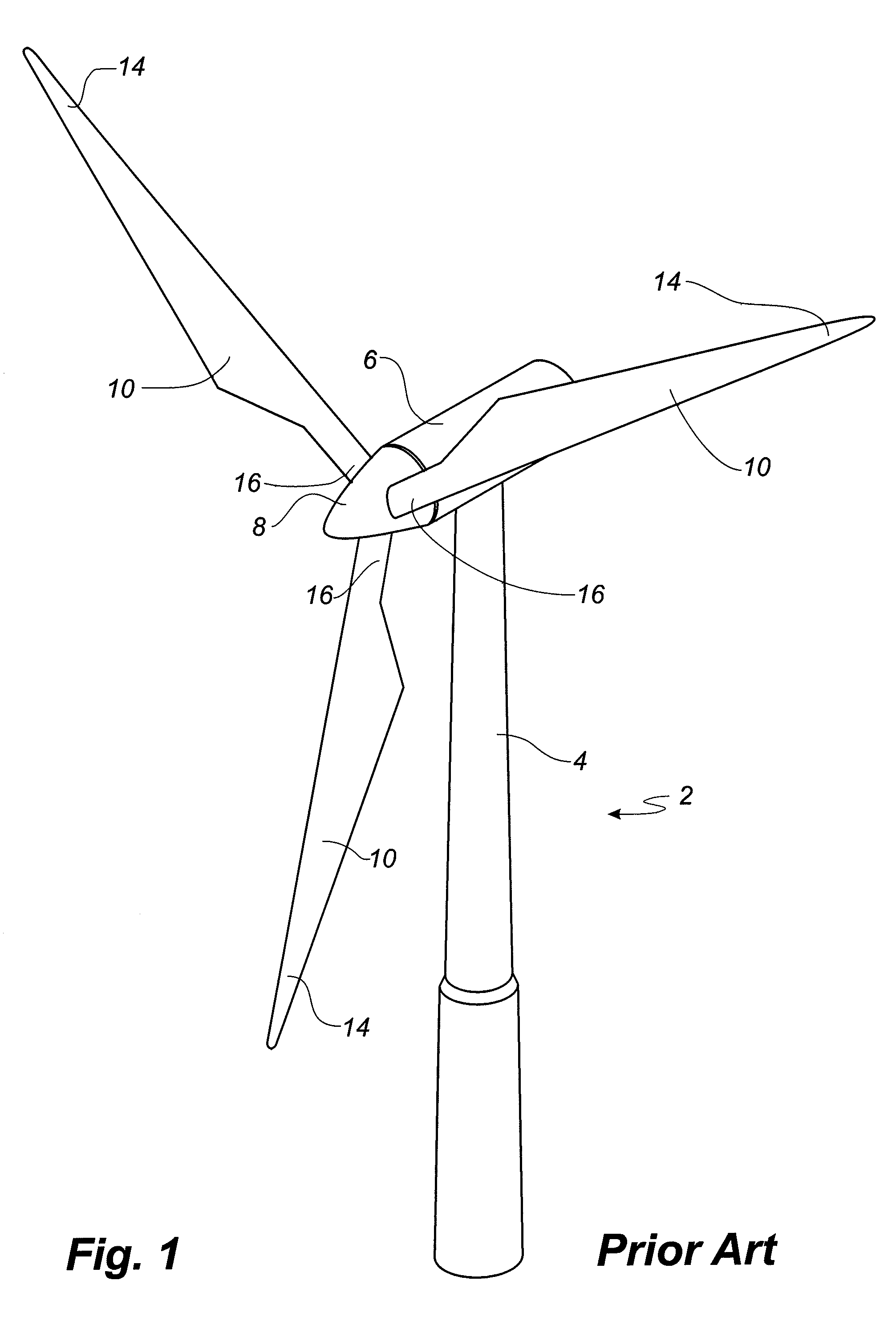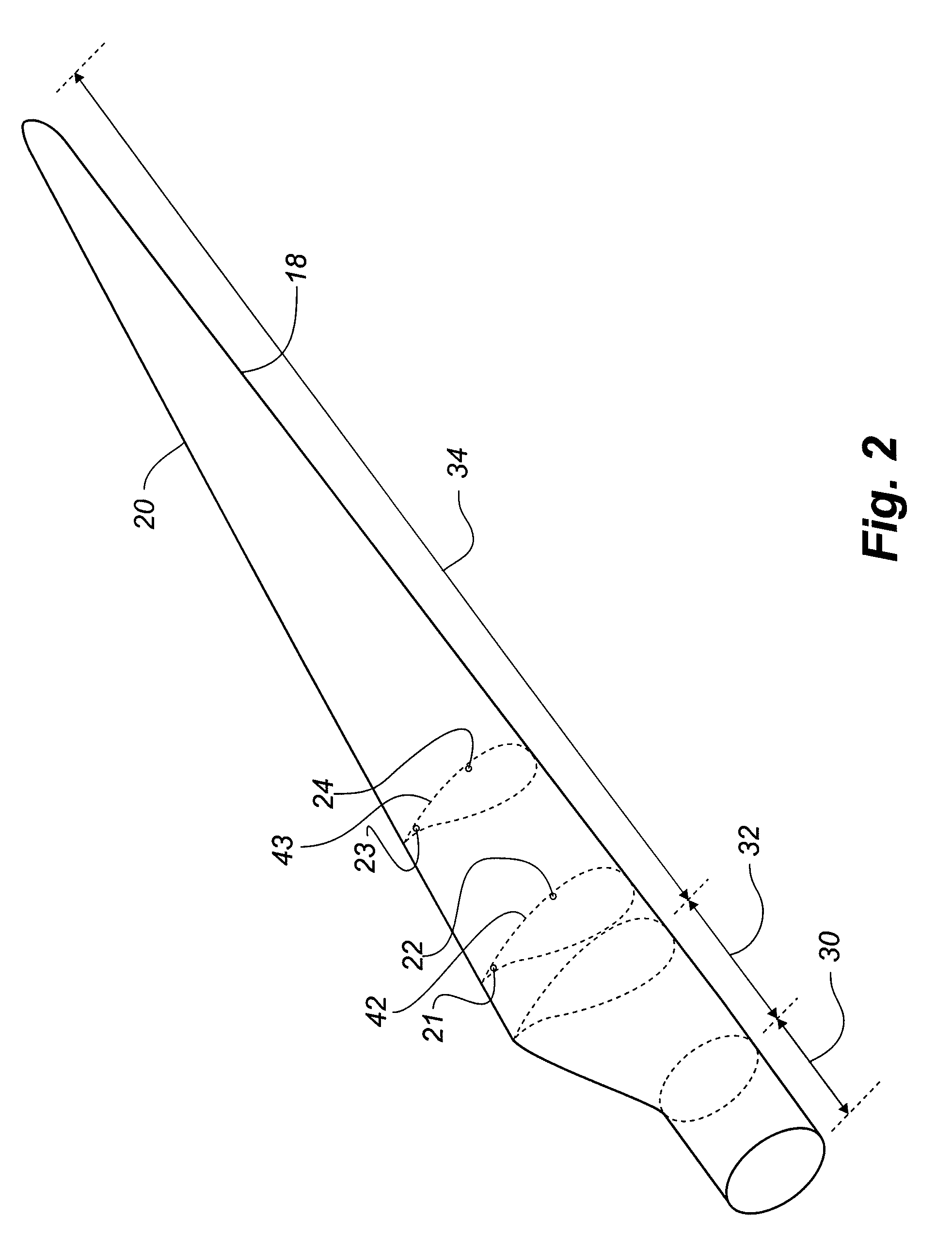Method of in situ calibrating load sensors of a wind turbine blade
a technology of load sensor and wind turbine blade, which is applied in the direction of motors, engine control, wind energy generation, etc., can solve the problems of aging or possible damage of the blade, and achieve the effect of less time-consuming and further precision in the calibration process
- Summary
- Abstract
- Description
- Claims
- Application Information
AI Technical Summary
Benefits of technology
Problems solved by technology
Method used
Image
Examples
Embodiment Construction
1. Introduction
[0049]New wind turbine blades are increasingly often equipped with load sensors used for control purposes and / or monitoring. In order to obtain reliable measurements, the load sensors must be calibrated. This can be done in the factory, but is relatively costly. If for some reason the load sensors need to be re-calibrated after some operation on the turbine, it would be very expensive to dismount the blades and carry them to the factory for calibration. Therefore, there is a demand for a possibility of calibrating the sensors on-site and preferably while the blade is mounted on the turbine.
[0050]This document describes a concept for fully automatic calibration of the sensors on-site while the turbine is running and connected to the grid. The methods and ideas are described, and the equations needed for implementation in the software for the auto calibration device are presented.
[0051]FIG. 1 illustrates a conventional modern upwind wind turbine according to the so-call...
PUM
 Login to View More
Login to View More Abstract
Description
Claims
Application Information
 Login to View More
Login to View More - R&D
- Intellectual Property
- Life Sciences
- Materials
- Tech Scout
- Unparalleled Data Quality
- Higher Quality Content
- 60% Fewer Hallucinations
Browse by: Latest US Patents, China's latest patents, Technical Efficacy Thesaurus, Application Domain, Technology Topic, Popular Technical Reports.
© 2025 PatSnap. All rights reserved.Legal|Privacy policy|Modern Slavery Act Transparency Statement|Sitemap|About US| Contact US: help@patsnap.com



